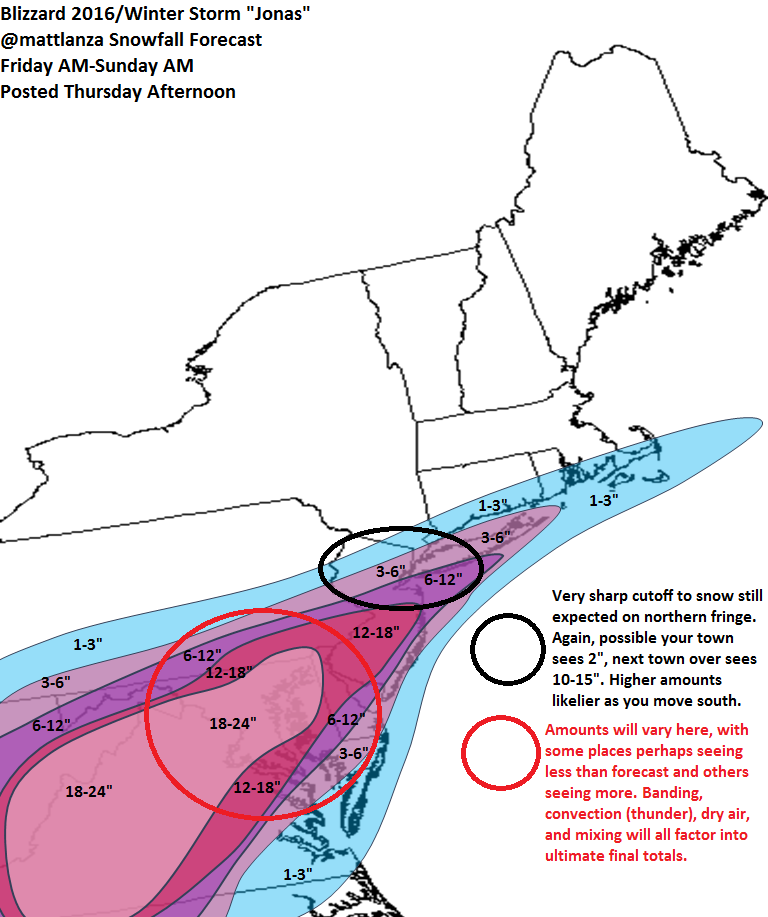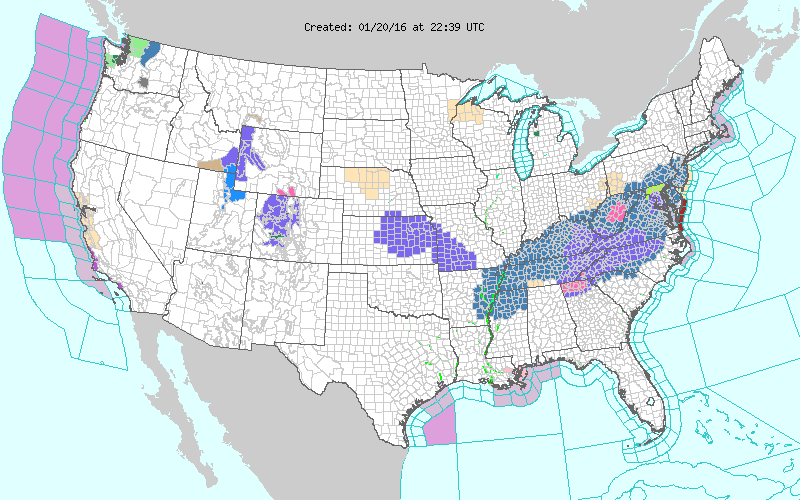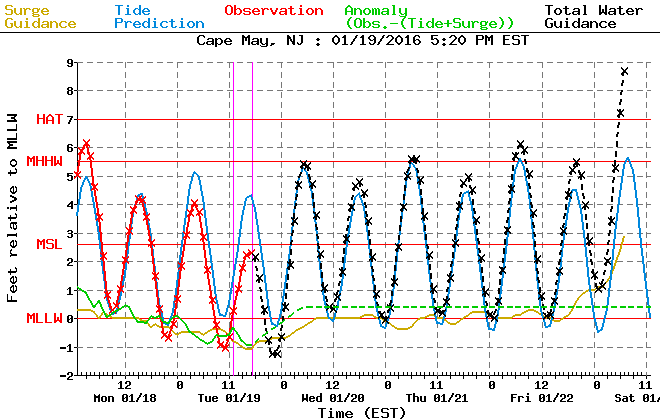While it is still fresh, some thoughts on this storm.
1.) Give New Jersey the record it deserves. Being a native of New Jersey, I sincerely hope NWS investigates the 33″ Morris Plains and 35″ CoCoRaHS ob from Mine Hill. The 24 hour record for snow in Jersey was 32″ in 1915 in Rutherford. Based on the timing of snow obs at Morristown (MMU) and Somerville (SMQ), I suspect almost all this snow fell within a 24 hour period, and if the totals can be vetted and verified, a new state record should be established.
2.) Kudos to forecasters and communicators. While this was a challenging storm to pin down, I thought almost *all* forecasts for this event were incredibly well done. Everyone deserves credit. Unless you bought the NAM literally and took 1-2′ of snow to I-90 in Massachusetts, or unless you completely ruled out any chance of New York City seeing major snows, you did well in this event.
Between the uncertainty of the northern fringe gradient, the potential for epic snows around DC, the coastal flooding potential, there was a lot to communicate in this event. In my opinion, it was all done very effectively by so many within the weather community, from the NWS, TV, private sector, and social media types.
3.) It’s not the model, it’s how you use it. The amount of “modelology” surrounding this event was…annoying to say the least. So many people declaring the NAM victorious. At one point or another, most major global models indicated enough variability and risk on the northern fringe of the snow to include most of New Jersey and New York City within the “margin of error” so to speak. The NAM did not “win.” Again, judging by the map above, if you lived in Hartford or Springfield, MA or Boston and used the NAM, you had a lot of egg on your face. That’s not an inconsequential populous. Yes, the NAM was the more aggressive model in New York City and on that metric alone, it did well. But it didn’t win. No model “wins.” As a forecaster, it’s your job to objectively analyze the models…all of them…use every tool in your toolbox and make a call. If you blended the NAM with the RGEM and the Euro/GFS, well then you did *damn* good in this event with your snow forecast most likely. Likewise, if you outright dismissed the NAM because of last winter’s NYC debacle, you probably failed too. Recency bias will kill you. Many of us joked about the NAM being the NAM…and that is certainly exaggerated by some of us (including me…I do use the NAM daily when forecasting for Texas and Louisiana, and I have used it aggressively at times). It has a reputation for being sketchy, but I know most rational forecasters do use it and consider it.
We just can’t turn this into some training camp competition. If you use the NAM alone for the next event, I guarantee you your forecast will have serious shortcomings. Use all the tools; know their strengths and weaknesses in the areas you care about and leverage them to your advantage as a forecaster. And don’t fall prey to recency bias.
4.) Can we please figure out snow measurement? This is not a uniquely DC thing. It’s been a problem in New York City in the past. It’s a problem in Denver. It’s a problem in so many places.
Fully understanding weather and changes in climate in places is heavily dependent on having a long set of reliable actual measured data at those places. When we can’t depend on data being reliable, what use do we have for it? Why do we have a top 10 list of snowstorms? Why even bother? It’s time for someone to step in, standardize, and properly coordinate snow measurements at places. Cost isn’t an issue. The way I’d approach it: You know how many people would volunteer to do it correctly and love every second of it? Find a spot representative of a city (not an airport across from it and adjacent to a river), probably on state or federal property, and have a team of volunteers at the ready, able to coordinate, trained properly by NWS, and eager to jump in when snow is predicted. Adjust the site as needed for changes in population distribution, new construction, etc. We’re making this a lot more difficult than it needs to be.
5.) Storm names are fine, but we don’t need 30 of them. When they started, I was skeptical of The Weather Channel naming storms, though I believed from the beginning that it would be a successful venture. I think to this point, the storm name concept has worked. I get the frustration, but that ship has sailed and it’s not coming back. So we either do it right or we continue doing it this way, where there were at least 6-7 different storm name hashtags for the same storm. It’s a patchwork free-for-all, and it would be nice if we could streamline it. It would be better for everyone. The research argument is simple: How on earth can we find pictures and tweets from this event without searching through eleventy different hashtags? Instead of still griping about the fact that it’s done, come up with a way to do it better and get everyone to agree. It will be less difficult than anyone thinks, but to make it universal, it can only come from the NWS. It’s time.
Those are my thoughts. What are yours?






